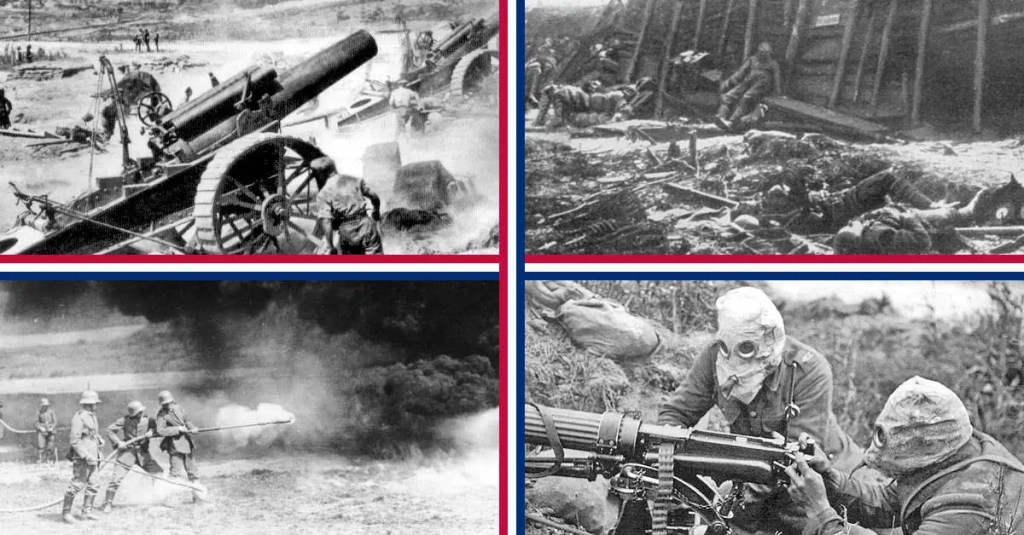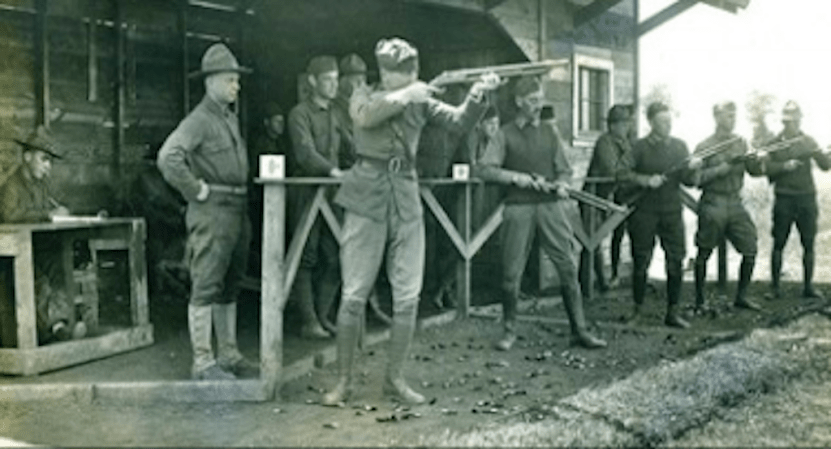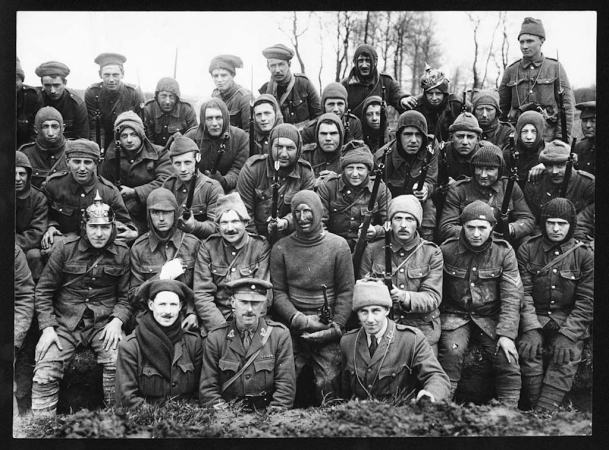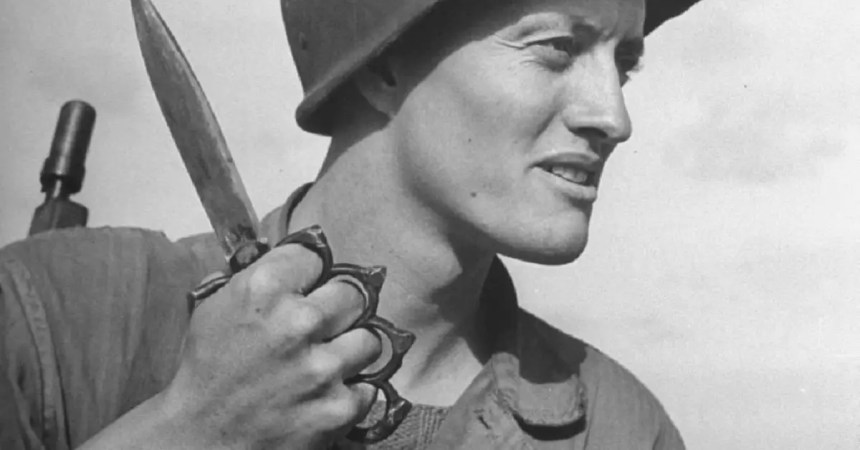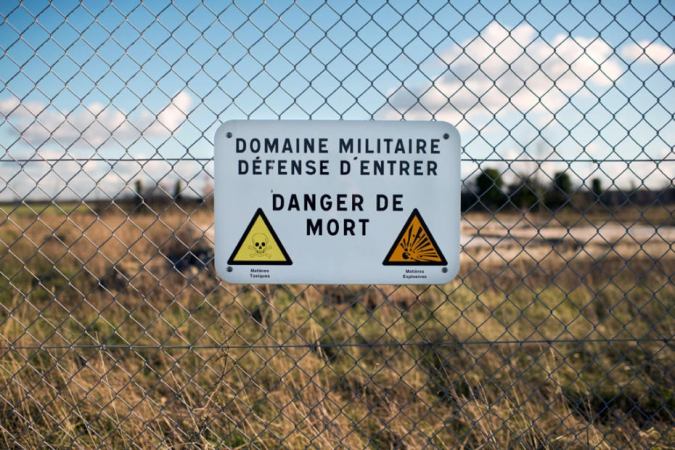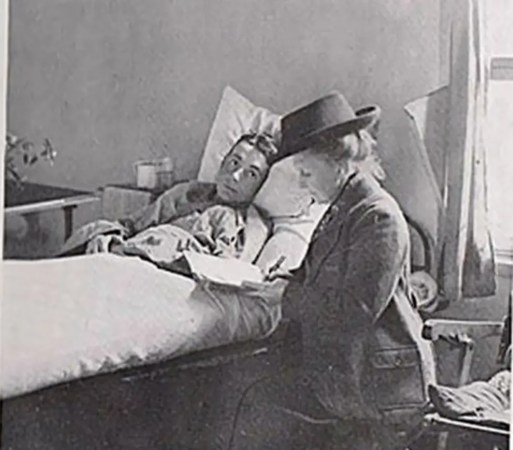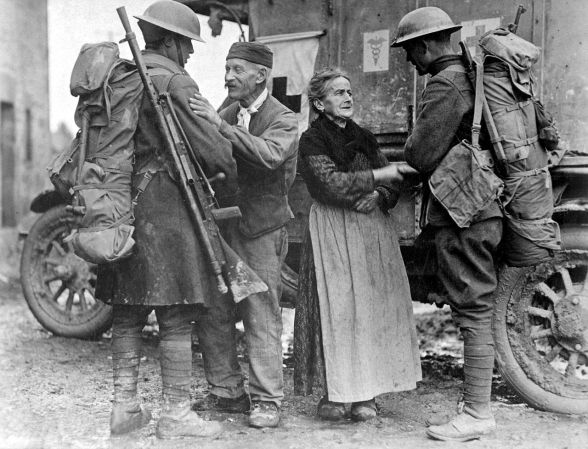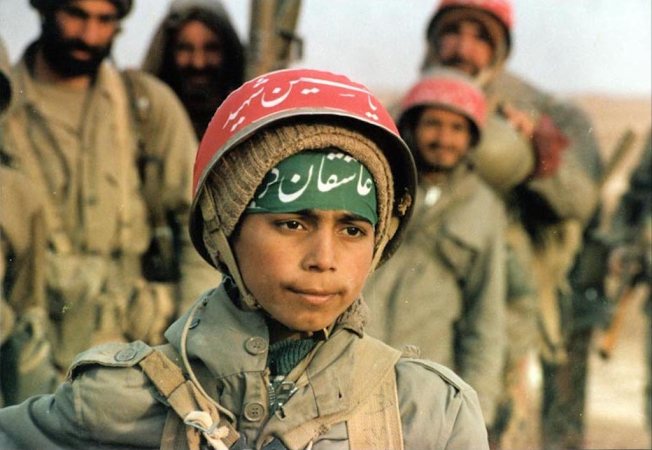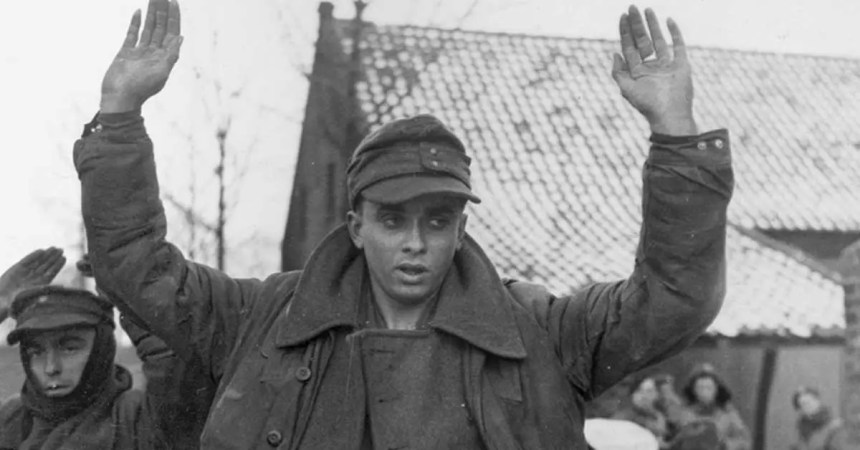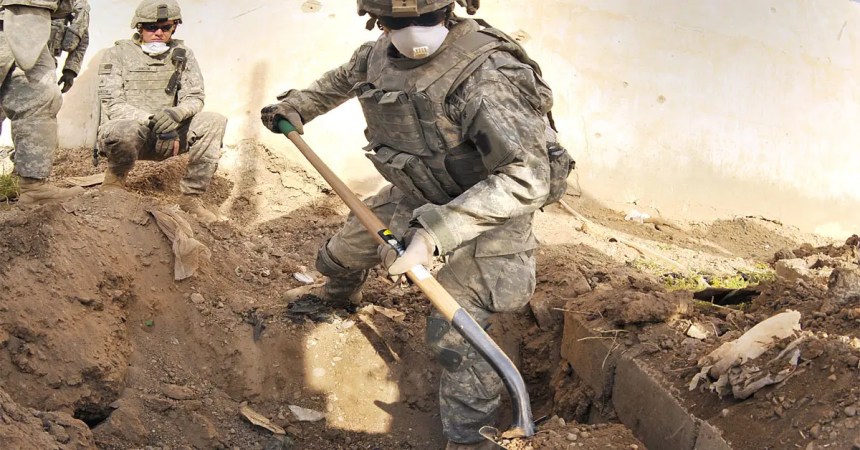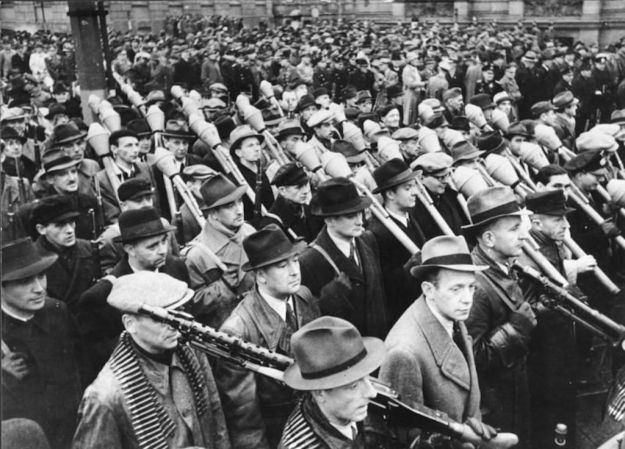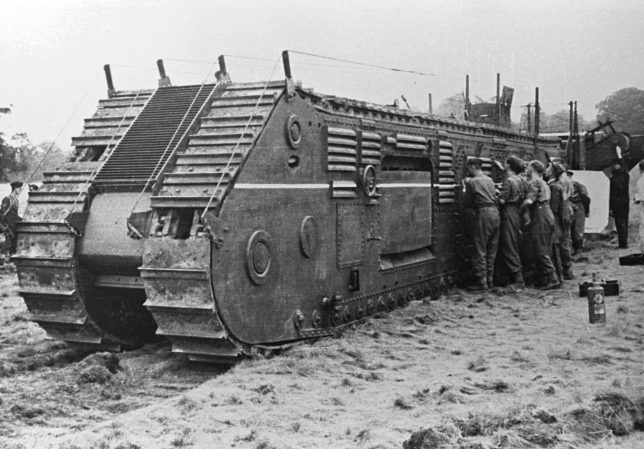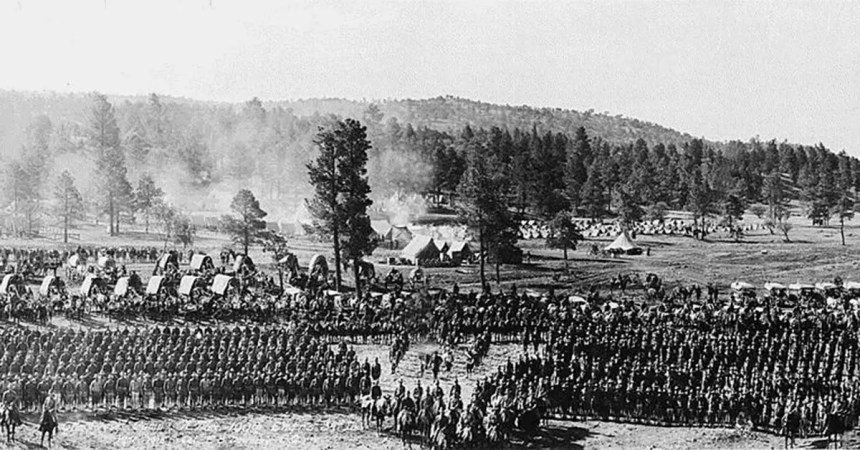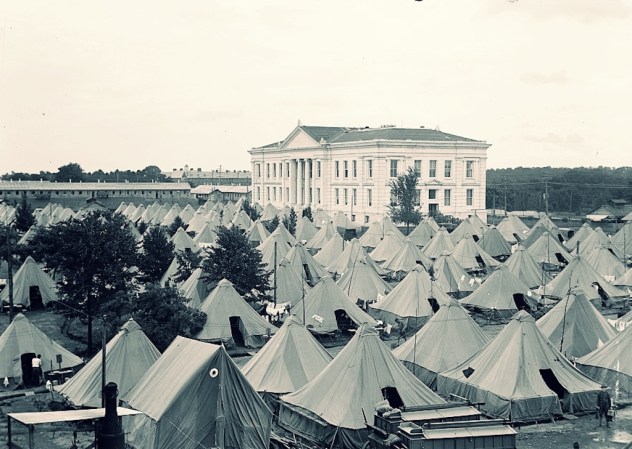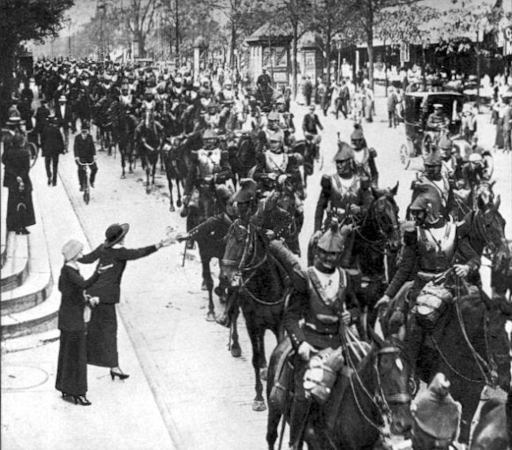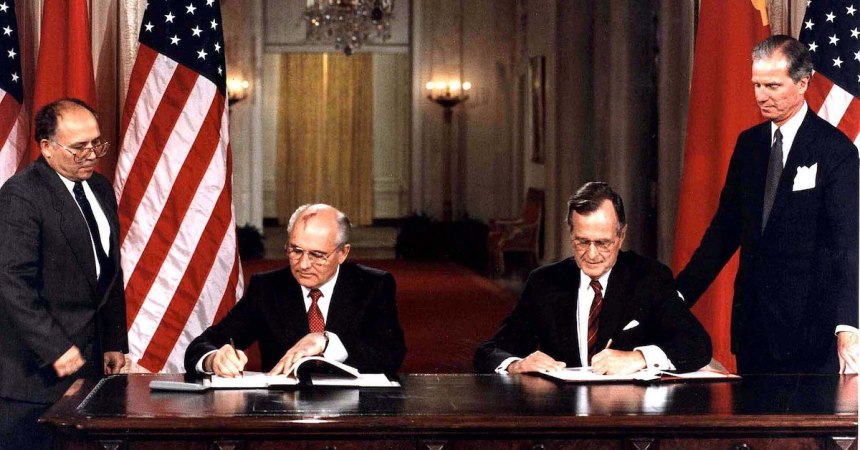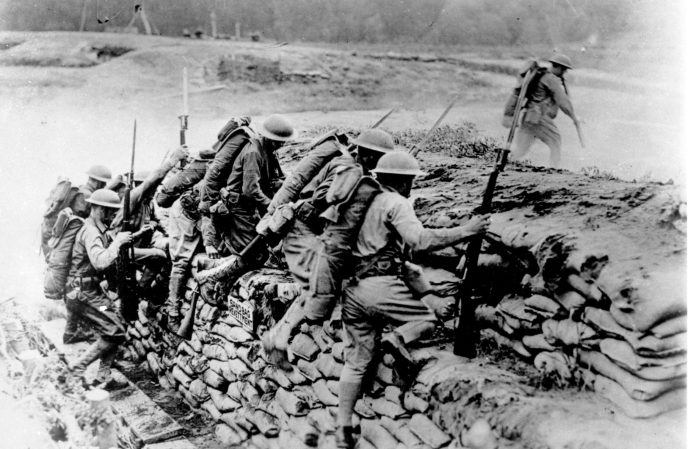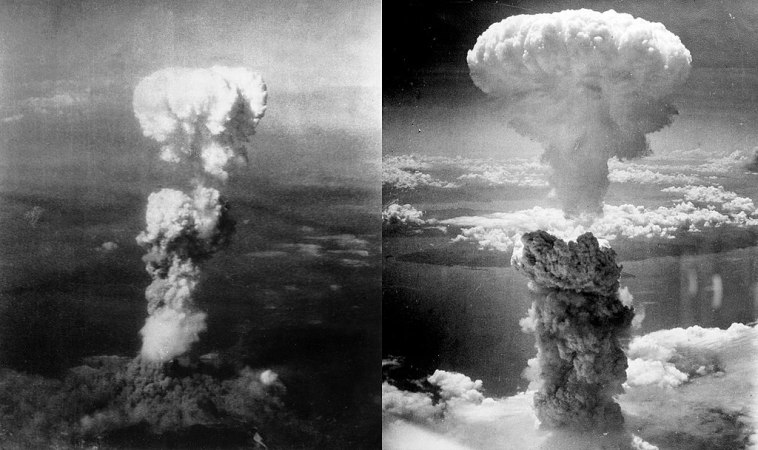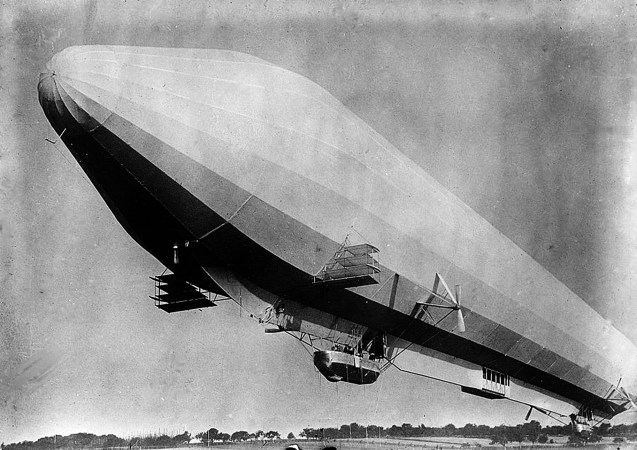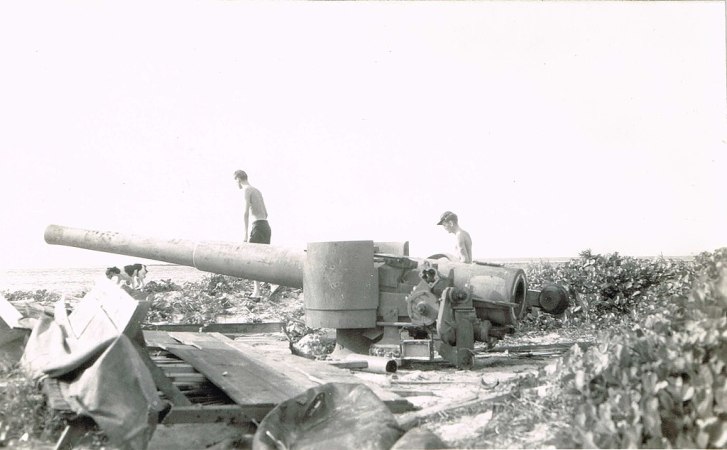When the Great War began in 1914, the armies on both sides brought new technologies to the battlefield the likes of which the world had never seen. The destruction and carnage caused by these new weapons was so extensive that portions of old battlefields are still uninhabitable. World War I saw the first widespread use of armed aircraft and tanks as well as the machine gun. But some of the weapons devised during the war were truly terrifying.
Here are the 6 most terrifying weapons of World War I
1. The Flamethrower

The idea of being able to burn one’s enemies to death has consistently been on the minds of combatants throughout history; however, it was not until 1915 Germany was able to deploy a successful man-portable flamethrower.
The flamethrower was especially useful because even just the idea of being burned alive drove men from the trenches into the open where they could be cut down by rifle and machine gun fire.
The terrible nature of the flamethrower, Flammenwerfer in German, meant that the troops carrying them were marked men. As soon as they were spotted, they became the targets of gunfire. Should one happen to be taken prisoner, they were often subjected to summary execution.
The British went a different way with their flamethrowers and developed the Livens Large Gallery Flame Projector. These were stationary weapons deployed in long trenches forward of the lines preceding an attack. The nozzle would spring out of the ground and send a wall of flame 300 feet in the enemy’s direction.
These were used with great effectiveness at the Somme on July 1, 1916 when they burned out a section of the German line before British infantry was able to rush in and capture the burning remnants.
2. Trench Knife

Even with the advent of the firearm, hand-to-hand combat was still a given on the battlefield. However, with the introduction of trench warfare, a new weapon was needed in order to fight effectively in such close quarters. Enter the trench knife.
The most terrifying trench knives were developed by the United States. The M1917, America’s first trench knife, combined three killing tools in one. The blade of the weapon was triangular which meant it could only be used for stabbing, but it inflicted terrible wounds.
Triangular stab wounds were so gruesome that they were eventually banned by the Geneva Conventions in 1949 because they cause undue suffering. The knife also had a “knuckle duster” hand guard mounted with spikes in order to deliver maximum damage with a punching attack. Finally, the knife had a “skull crusher” pommel on the bottom in order to smash the enemy’s head with a downward attack.
An improved design, the Mark I Trench Knife, was developed in 1918 but didn’t see use until WWII.
3. Trench Raiding Clubs

Along with the trench knife the Allies developed other special weapons for the specific purpose of trench raiding. Trench raiding was the practice of sneaking over to enemy lines’ and then, as quietly as possible, killing everyone in sight, snatching a few prisoners, lobbing a few explosives into bunkers and high-tailing it back to friendly lines before the enemy knew what hit them.
As rifles would make too much noise, trench raiding clubs were developed. There was no specific design of a trench raiding club, though many were patterned after medieval weapons such as maces and flails.
Others were crude handmade implements using whatever was around. This often consisted of heavy lengths of wood with nails, barbed wire, or other metal attached to the striking end to inflict maximum damage.
4. Shotgun

When Americans entered the fight on the Western Front they brought with them a new weapon that absolutely terrified the Germans: the shotgun. The United States used a few different shotguns but the primary weapon was the Winchester M1897 Trench Grade shotgun. This was a modified version of Winchester’s model 1897 with a shortened 20″ barrel, heat shield, and bayonet lug.
The shotgun, with 6 shells of 00 buck, was so effective that American troops referred to it as the “trench sweeper” or “trench broom.”
The Germans, however, were less than pleased at the introduction of this new weapon to the battlefield. The effectiveness of the shotgun so terrified the Germans that they filed a diplomatic protest against its use. They argued that it should be outlawed in combat and threatened to punish any Americans captured with the weapon.
America rejected the German protest and threatened retaliation for any punishment against American soldiers.
5. Poison Gas

Of course any list of terrifying weapons of war has to include poison gas; it is the epitome of horrible weapons. Poisonous gas came in three main forms: Chlorine, Phosgene, and Mustard Gas.
The first poison gas attack was launched by the Germans against French forces at Ypres in 1915. After that, both sides began to develop their chemical weapon arsenals as well as countermeasures.
The true purpose of the gas was generally not to kill — though it certainly could — but to produce large numbers of casualties or to pollute the battlefield and force the enemy from their positions.
Gas also caused mass panic amongst the troops because of the choking and blindness brought on by exposure causing them to flee their positions. Mustard gas was particularly terrible because in addition to severely irritating the throat, lungs, and eyes, it also burned exposed skin, creating large painful blisters.
6. Artillery

Though artillery had been around for centuries leading up to WWI, its use on the battlefields of Europe was unprecedented. This was because of two reasons.
First, some of the largest guns ever used in combat were employed during the war.
Second, because the world had never seen such concentrations of artillery before.
Artillery shells were fired in mass concentrations that turned the earth into such a quagmire that later shells would fail to detonate and instead they would simply bury themselves into the ground. Massive bombardments destroyed trenches and buried men alive.
Artillery bombardments were so prolific that a new term, shell shock, was developed to describe the symptoms of survivors of horrendous bombardments.


